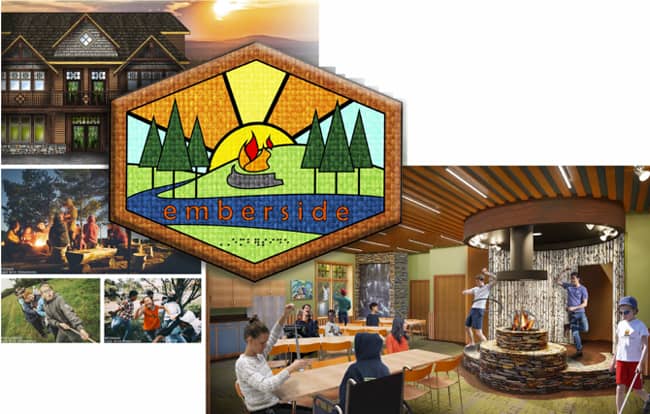Furniture Library Announces 2020 Interior Design Competition Winners
Furniture World News Desk on
3/4/2020
Last week the Bienenstock Furniture Library Board of Directors announced the winners of the Interior Design Competition, awarding $7,500 in scholarships to distinguished scholars to continue their studies in Interior Design.
In addition, their schools will receive a $1,000 bonus to fund academic programs. The Bienenstock scholarship is open to any junior, senior or graduate student enrolled in an accredited college design program. The Library has awarded more than $460,000 in scholarship money to date. Winning entries can be viewed on the Library's website at www.furniturelibrary.com.
The American Society of Interior Designers (ASID) is the official sponsor of the competition providing creative project ideas and assisting in the judging process. This is an annual competition and a new contest will be announced in May of 2020.
THE WINNING ENTRY

The winning entry was named Wëlike Playhouse submitted by Xin Schiffman of Saddleback College in Mission Viejo, California. According to Schiffman, the name, Wëlike, (pronounced WOO-LEE-KAY) was derived from the indigenous Lena'pe Native Americans living in the area and literally means "He has a nice home." She notes, "The name closely resembles We like in English, and connotes "we like the playhouse", a fun and comfortable place that will welcome every camper."
The design of the logo was adapted from a piece of furniture designed by Greg Klassen and is aptly named the Glass River, which combines the natural beauty of glass and natural wood, suggesting that a river runs through it. According to Schiffman, In the Lena'pe language, "Pocono" means "A river between two mountains." The river theme is carried throughout the design to connect the facility to the local surroundings. A running river flows from the front entrance across the floor to create not only visual interest but also a traffic path.

She added, "The last important element of my design is nature. Sustainability is a priority in the design. Ecofriendly materials like local woods are cost-saving, while some new tech sustainable products are applied on the floors and ceilings. They are more durable and have a lower environmental cost than natural materials, but with a low carbon footprint." The design concept is intended to create a friendly home for summer campers aged 8 to 14 of various backgrounds, cultures and lifestyles.
Judge Christi Spangle commented: "Xin's beautiful renderings helped to fully articulate the camp focused design concept. She clearly thought through the project, with great attention to detail and technical attention."
When asked to explain her inspiration, she added, "The regionally diverse cultures of the native Indians and the natural beauty of their geography. The picture of Delaware Water Gap reminded me of an American photographer, Laura Gilpin, who is known for her photography of Native Americans.

Gilpin's quote, 'A river seems a magical thing. A magical, moving, living part of the very earth itself.' I decided to use the concept of the river as my major design element."
When asked about how she first became interested in Interior Design, she replied "I am originally from China but have been in this country for many years. I was a business major in college and an art lover since I was a teenager. Art museums are my favorite places to visit when I travel. When I helped my family to renovate an old house, I was overwhelmed by the many critical considerations like space planning, styles, materials, and furniture. I realized a systematic study would be helpful. That's why I decided to start the Interior Design program at Saddleback College."
When asked about her career goals upon graduation and her long-term dream job, she said, "I spent quite a lot of time investigating new materials for this project and am amazed by new technologies which are not only energy-efficient with a low carbon footprint, but also provide great aesthetic appeal. I would like to apply what I have learned in the design of green, comfortable and affordable housing."
Farida Gabdrakhmanova, Professor of Interior Design at Saddleback College said, "Xin strives to push the envelope of every project beyond what is required of the assignment, and this competition project was no exception. Her thorough geographical and historical research resulted in the strong design concept that incorporated the natural surroundings and local environs, the history of the native inhabitants, as well as the client's requirements.
Thinking 'outside the box,' attention to detail, and an artistic approach produced a creative space plan reflecting a concept that was fully compliant with the program and code requirements. Xin artfully wove the history and the future through innovative materials, sustainable technologies, and selection of furniture and accessories inspired by the art and local historical cultures. She combines artistic vision and technical skills with a strong work ethic, and her project has bloomed like a beautiful flower with each petal having its meaning and purpose."
The second-place winner was Soraia DeSouza, who is also a student at Saddleback College, in Mission Viejo California. She receives a $1,500 scholarship to be applied to continuing her education. When asked about her intention, she replied, "Design concepts based on visual experiences create an interesting learning environment. In the great room called Forest, children can engage in activities such as crafts, reading or watching plays. They will be entertained the whole time while learning. The Center and its activities were designed under the universal design concept. It's a flexible space, accommodating to everyone. Sensory design and careful choices in the finishing materials induce a healthier experience by engaging children to the center."
Judge Holly Woodward complimented DeSouza's project for its detailed thought of concept, excellent use of color, and organization.

The second-place winner was Soraia DeSouza, also of Saddleback College, in Mission Viejo California.
The third-place winner was Kevin Gerbrandt of Forsyth Technical Community College in Winston-Salem, NC. He receives a $1,000 scholarship to be applied to continuing education. Gerbrandt's design focused on a return to nature. When asked about his inspiration, he replied, "In a world where we - and especially our youth - are more digitally connected than ever, we experience more loneliness and isolation. Responding to the problem of this epidemic lies at the heart of my solution: to design a space in which our youth can build more authentic relationships with one another through increased connectivity not through technology, but through the land and the natural environment they inhabit."
Judge Bri Verstat noted, "Great use of space, organized floor plans, and excellent renderings."

The third-place winner was Kevin Gerbrandt of Forsyth Technical Community College in Winston-Salem, NC.
An honorable mention went to Michelle Zoldano, Saddleback College, Mission Viejo California Judges felt this was a strong project and needed recognition for its layout and concept. (AGATventure Therapeutic Camp).
INTERIOR DESIGN COMPETITION
Entrants were given the following real-world assignment:
Design a sleepover camp activity center for co-ed campers for all children, including special needs campers. Located in the Pocono Mountains of Pennsylvania, design a private residence for camp director and executive offices for camp. All plans, drawings and specifications were given to the students. They were also asked to design a logo.
The competition received multiple entries from colleges throughout the country including: Saddleback College, Virginia Commonwealth, Virginia Tech, Randolph Community College, Forsyth Technical Community College, University of Central Oklahoma and Savannah College of Art & Design.
The distinguished panel of judges included: Christi Spangle, Barbour Spangle Design; Kara Cox, Kara Cox Interiors; Brianne Verstat, Barbour Spangle Design; Gwen Emery, NCSU; Jessica Alpert, Gensler; June Anderson, ASID; Marilyn Russell, Baker Barrios, and Holly Woodward, Baker Furniture.
About The Bienenstock Scholarships: The annual Bienenstock Scholarship competitions are open to any junior, senior or graduate student enrolled in an accredited college program of furniture design or interior design. Since 1984, the Library has awarded more than $460,000 in scholarships to students in hundreds of colleges and universities. Judging is blind-with no name or college shown with the submission. A distinguished panel of industry experts juried each competition.
About The Bienenstock Furniture Library:
The Library's collection of more than 5,000 curated volumes, periodicals and original materials span 600 years of design history, placing the full spectrum of design ideas - from the greatest movements to the smallest details - in the hands of tomorrow's innovators and creators. In addition to endowing the next generation of designers with this rich array of resources, we create ideal conditions for the discovery and nurturing of the new design visions and ideologies that will transform the way we work and live. Beautiful workspaces invite students and professionals to become fully immersed in our materials.
The sculpture garden surrounding the Library provides a place for quiet reflection. Meeting spaces and a multi-media seminar room provide space for professionals and organizations to speak about design, share information, solve industry challenges, and discuss the ideas that will shape tomorrow's spaces.
Like us on FacebookBy serving as North America's premier repository of design ideas, and creating a platform for study, reflection, collaboration, and outreach, the Bienenstock Furniture Library is the place where creative minds can touch history and design the future. The easiest way to stay up to date on the developments of the library is to "LIKE" its Facebook page at: https://www.facebook.com/BienenstockFurnitureLibrary.
About The ASID: ASID is a community of people driven by a common love for design and committed to the belief that interior design, as a service to people, is a powerful, multi-faceted profession that can positively change people's lives. Through education, knowledge sharing, advocacy, community building and outreach, the Society strives to advance the interior design profession and, in the process, to demonstrate and celebrate the power of design to positively change people's lives. Its more than 30,000 members engage in a variety of professional programs and activities through a network of 48 chapters throughout the United States and Canada. Founded in 1975, the American Society of Interior Designers is the oldest, largest and leading professional organization for interior designers. The Society's membership also includes more than 10,500 students of interior design. For more information, visit http://www.asid.org.